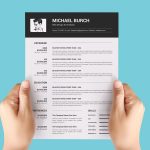Right now, great designers and developers realize the significance of usability for his or her work. Functional websites offer great user encounters, and great user encounters result in happy customers. Delight and suit your visitors, instead of frustrate and annoy them, with smart design decisions. Listed here are 9 usability1 issues that websites generally face, and a few suggested solutions for all of them. [Content Care November/30/2016]
You may even want to consider the next related posts:
- 30 Usability Issues To Understand2
- 12 Helpful Approaches For Good Interface Design3
- 10 Helpful Web Application Interface Techniques4
1. Small clickable areas Link
Hyperlinks are created to be clicked, so to ensure they are functional, it seems sensible to make sure that they’re simple to click. Here’s a good example of links that are way too small clicking them is harder than it ought to be. Fundamental essentials comments links on Hacker News5, a social news website. (Clickable areas are highlighted in red):
 6
6
Here’s a good example of exactly the same interface element, your comments ought to link, however this time having a much bigger clickable area:
 7
7
Newspond8 comments link.
Why would we would like a bigger clickable area? Simple. Because our hands movement using the mouse isn’t very precise. A sizable clickable area causes it to be simpler to hover a button cursor within the link. To make sure we obtain a sizable clickable area, we’re able to either result in the whole link bigger or boost the padding round the link while using CSS “padding” property. Here’s the code:
Example Site
The CSS continues to be placed inline along with the markup to help make the example simpler, however in real existence you’ll likely wish to add this styling for your CSS file by providing the hyperlink a category or id and targeting it with this.
Read much more about padded link targets for much better mousing inside a 37signals article on padded link targets9. Based on the article, padding provides users with “a sense of comfort. It’s just quite simple to click on the links. It seems like the hyperlinks will work along with you rather of against you.”
2. Pagination employed for the incorrect purpose Link
Pagination describes separating content onto several pages. This really is frequently available on websites which have lengthy lists of products for instance, products inside a store or pictures inside a gallery. Using pagination for this function is sensible because displaying a lot of products on a single page will make the page slower to download and process.
 10
10
FeedMyApp11 uses pagination correctly: to show its vast listing of apps in digestible chunks.
But there’s one other way that pagination can be used on the internet today. Content pages, like blog entries, are occasionally split up into several pages. How can this be done? What’s the gain? It’s unlikely the article is such a long time required pagination generally, it’s accustomed to increase page views. Because lots of blogs and magazines obtain revenue through advertising, getting good page views (i.e. individual page loads) boosts their viewing statistics and enables these to charge more for every ad.
 12
12
The Wired article about Google’s emblem13 is split up into eight pages, which makes it tough to read.
Although this may appear like a good way to squeeze more income out of your ads, it poses two primary problems. The very first is that it is just really, really annoying. Getting to load several pages simply to read one article isn’t fun. You’re developing a barrier for the visitors that does not need to be there.
Another factor to consider is due to Search engine optimization (internet search engine optimization). Search engines like google make use of the content in your page to understand what it’s about after which index it accordingly. When the submissions are split up into several pages, it’s diluted, and thus each page makes less sense by itself and holds less keywords about its subject. This might negatively modify the ranking of this article in internet search engine results.
Resourse: https://smashingmagazine.com/2009/02/9-common-usability-blunders/




